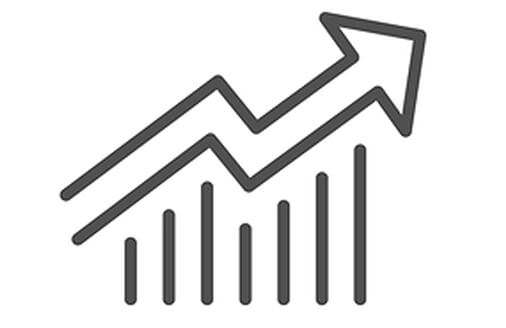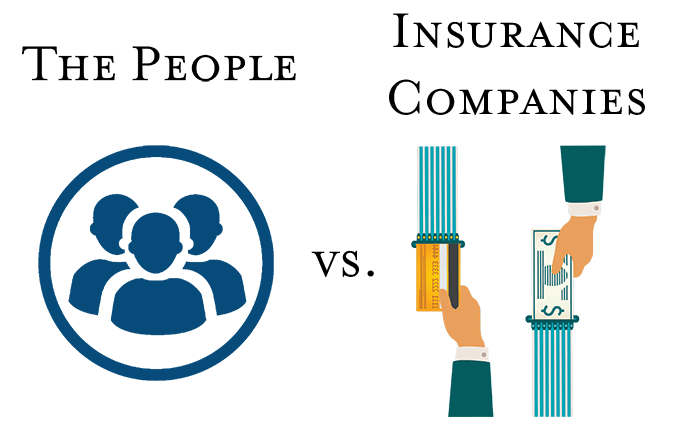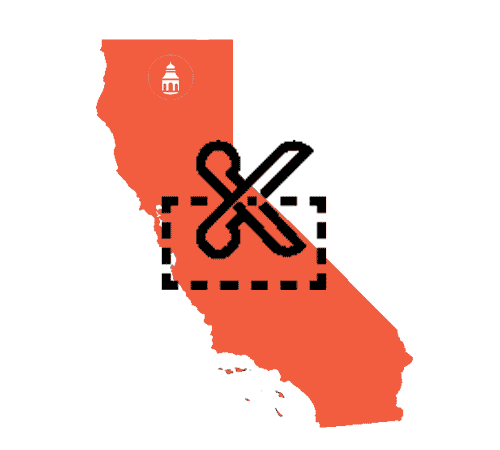The Effects of Using Drug Coupons in California
Healthcare in the United States is both expensive and complicated. For people who desperately need their prescription drugs, the costs and complexities of prescriptions and insurance are frustrating. Drug coupons seem to streamline the process, but the effects of using drug coupons in California and beyond have led to many in the medical and legislative communities calling for an end to the practice.
The Rise of Drug Coupons

Simply put, a drug coupon is a voucher that entitles consumers to save money on prescription drugs. Drug coupons are offered by pharmaceutical companies or passed on to patients through doctors and pharmacists. Patients can easily get a drug coupon online, print it out wherever they can, and then present it when picking up their prescriptions.
The idea behind drug coupons is to reduce out-of-pocket costs for consumers by offering instant savings, free trials, copay reductions, or rebates. The drug companies that manufacture generic drugs rarely offer coupons; it is primarily larger corporations that are in the business of drug coupons.
This is where the issue gets contentious. Kaiser Health News explains that “coupons and discount cards have become nearly ubiquitous for prescription drugs.” In 2009, for example, a marketing firm reported that drug coupons existed for only 86 different drugs. Three years later, IMS Health found that as many as 395 medications were eligible for coupons.[1], [2]
Perspectives on Drug Coupons

From the perspective of pharmaceutical companies, drug coupons connect patients with much-needed medication. For some of those patients, it is the only way they can afford their drugs. A person writing to the Los Angeles Times notes that her prescription for psoriasis and psoriatic arthritis would cost her $3,360 per month, out of pocket. Her insurance covers $2,688; the manufacturer “provides a coupon that covers all but $10 of the remaining balance.” The drug she needs has no generic equivalent, leading her to challenge the claim that the coupon programs used by drug manufacturers are a bad idea.[3]
That claim is made by insurance companies who see the situation very differently; discounted drugs incentivize patients to seek out brand name medication, eschewing generic versions of the drug, which are completely acceptable alternatives. Insurers are left to cover the full cost of the drugs, for which they create higher premiums that are then passed on to consumers.
Raising Prices by 1,000 Percent
A spokeswoman for America’s Health Insurance Plans, the industry trade group, told Kaiser Health News that although an individual patient may have to pay less for a particular prescription (because of the drug coupon), “overall, what [drug coupons do] is to raise costs for everyone, including themselves.” Even as entitlement programs like Medicare, Medicaid, veterans’ benefits, or other federal health insurance programs try to keep healthcare costs down, the use of a drug coupon or a drug discount card drives prices up.
The increase can be as much as 1,000 percent, found the Los Angeles Times.[4] According to the Times, two companies were able to mark up their pain reliever and skin cream by $2,000 and $8,000 a month, respectively, by “coupons that deliver [the drugs] for as little to nothing for the patient,” leaving the bill with the insurers.
This is a new battle in the old war between pharmaceutical corporations and the health industry, says Kaiser Health News. Faced with daunting premiums, insurers set high copays for brand name drugs to try and guide customers toward their less expensive generic versions. But then the drug manufacturers issue coupons or discount cards to lure patients back with the promise of getting household-name drugs for a fraction of the cost.
The Journal of the American Medical Association found that the cholesterol-reducing drug Lipitor has an average copay of $30 a month. Simvastatin, a generic that also treats high cholesterol, has a monthly copay of just $10. Pfizer, Lipitor’s manufacturer, offers a coupon that reduces Lipitor’s copay to just $4 a month. For patients, desperate to do something about their cholesterol, this is an unbeatable deal; getting a prized drug like Lipitor for just $4 a month is the difference between untreated high cholesterol and making rent for a given month. But JAMA found that the insurer has to pay $137 a month for Lipitor, costs that are passed down to the all consumers in the form of higher premiums.[5]
Brand Name Drugs vs. Generic Drugs
Part of the problem is that patients want (and often demand) to be given the most expensive, well-known drugs, the kind they see advertised during the Super Bowl and on cable news. Generic drugs have little to no advertising behind them, so even though they are cheaper and as effective as their brand name counterpart, there is no demand for or interest in them. The president of the Pharmaceutical Care Management Association explains that drug coupons are specifically designed to get patients to request brand name drugs from their doctors.
Drug manufacturers have defended the policy of issuing drug coupons, claiming that the discounts save money by ensuring that patients get prescribed medications they could not otherwise afford, thereby preventing impending health problems. This is a significant problem in healthcare; in 2008, the JAMA journal reported that 20 percent of Medicare beneficiaries “with fair to poor health” were so concerned at how much their drugs would cost them that they opted not to renew their prescriptions.[6]
Drug Coupons in California

A number of states have taken the coupon war to the courts, requesting that judges declare the use of coupons illegally and to order monetary damages. In California’s Sonoma County, State Assemblyman Jim Wood sponsored an anti-drug coupon bill that was approved by the Assembly in June 2017.The bill would prohibit drug corporations from offering coupons and discounts to patients for name brand drugs if a cheaper and generic version of the drug is available (similar to a move made by Massachusetts in 2012). Wood accuses pharmaceutical companies of preying on patients’ willingness to trust brand name drugs over comparable generics, with their “long, unpronounceable names,” according to the Los Angeles Times.[7]
According to Wood, the effect of drug coupons is purely an increase in profit for drug corporations, allowing them to hold on to their market share while squeezing insurance companies (who, in turn, raise their premiums).
An assistant professor of strategy at the UCLA Anderson School of Management, and the coauthor of the study that found that pharmaceutical corporations were using coupons to mask price hikes by 1,000 percent, told the Times that Wood’s proposed legislation would ultimately benefit consumers by promoting the use of generic drugs and thereby eliminating one way that drug companies could cause insurance rate hikes.
For the pharmaceutical industry, it’s simply cheaper for them to offer drug coupons for brand name medications than it would be to cut prices. Insurers, on the other hand, “get stuck paying full cost for branded drugs.”
It’s Never Too Late to Get Help
Defending Drug Coupons

The Times reports that the drug industry will likely lobby – aggressively – to convince the California Senate to not accept Wood’s bill. The official position of the industry, as articulated by a spokeswoman for Pharmaceutical Research and Manufacturers of America (the pharmaceutical industry’s main lobbying group), is that “this legislation is trying to solve a problem without identifying what the problem is.” In other words, if the coupons save people money on expensive medication, there is no reason for the government to get involved.
The drug industry has some local support. The California Life Sciences Association, a lobbying group for drugmakers in California, told California Healthline that drug coupons and discounts are incentives for patients to follow through with their prescribed treatment.[8] Reducing the cost that the patient is expected to carry leads to a greater chance that the patient will actually go to the pharmacy and get the prescription, according to the CLSA’s director of state and local government policy. The alternative is patient non-adherence to prescribed treatment, which costs the healthcare system billions of dollars, a claim supported by the Risk Management and Healthcare Policy journal.[9]
The drug lobby is very keen to ensure that the government does not get in the business of regulating prices. The Times explains that most other developed countries regulate drug prices because the people who need the drugs often have no choice but to buy them, and the governments of those countries step in to ensure that the population is not exploited.
In the United States, however, no such restrictions exist. In 2016, the average cost of prescription drugs went up by 9 percent and has been increasing by 10 percent for the last three years. Pfizer, one of the companies in the drug coupon business, has raised the price of almost 100 drugs by an average of 20 percent in the first six months of 2017. For people over 65, drug costs will increase by 12 percent in 2017; wages are expected to grow by only 2.5 percent. Insulin prices have gone up by nearly 300 percent since 2006, which is why the drug company Mylan was able to increase the price of EpiPens from $94 to $609.
The Times notes that when Mylan was criticized for the increase, it did not cut the price of EpiPens but instead offered a discount coupon. A professor at Harvard Medical School said that discount cards are nothing more than “a classic public relations move,” and will do nothing to address the issue of insurance companies being forced to hike up their premiums.[10]
Key Marketing Tool vs. Bait-and-Switch
A pharmaceutical news website said that copay coupons are a “key marketing tool,” but the Times reached a much harsher conclusion: Drug coupons are nothing more than a scam, a classic bait-and-switch for someone in a lot of pain and on a tight budget.[11]
Senior citizens (people over 65) may be the most vulnerable to the effect of drug coupons, and California has the largest number of Medicare beneficiaries in the country.[12] The manager of policy communications at the National Coalition on Health Care said that it makes sense for senior citizens to use discount programs; indeed, a survey of 1,000 elderly Americans who were enrolled in Medicare Part D showed that 6 percent of people who received Medicare benefits made use of drug coupons. But he cautioned that the coupons aren’t issued by pharmaceutical corporations out of the goodness of their hearts; “they’re there to cripple competition from generics.”[13]
Despite concern from policymakers and insurers, this is a battle that drug companies are currently winning. A 2016 article published in the New England Journal of Medicine found that “the number of [copay] coupons has skyrocketed,” increasing the percentage of prescriptions filled with brand name drugs by more than 60 percent.[14]
California and Pharmaceutical Corporations
The issue of using drug coupons in California would not be the first time the drug lobby and the state have clashed. In 2016, the Orange County Register wrote of how drugmakers were launching a “fierce campaign” against a law that would require manufacturers to both justify the costs of their treatments and disclose significant price increases. Even though the bill was widely supported by healthcare providers, insurers, labor unions, businesses, and patients, pharmaceutical corporations waged a massive campaign that warned the bill could lead to the supply of crucial drugs drying up.[15]
With a price tag of more than $100 million, their efforts were successful. In September 2016, the bill was withdrawn by the senator who proposed it because proposed amendments, such as increasing the threshold for which drug companies would be required to report their numbers, weakened it to the point where it would be ineffective.[16] The bill was reintroduced in March 2017, championed by State Assemblyman Jim Wood, whose similar drug transparency bill (covering drug coupons) was itself stalled.
“In 2016, drugmakers launched an eventually successful $100 million campaign to kill a Senate bill that would have required them to justify their treatment costs and disclose significant price increases.”
The pharmaceutical lobby is able to wield undeniable influence on California. In an attempt to keep the March 2017 bill at bay, representatives, researchers, and lobbyists went to Sacramento to argue at the state’s capital that the 145,880 jobs created by drug companies in California outnumber those in any other state.[17]
Nonetheless, maintains the Los Angeles Times, if pharmaceutical companies are gouging California’s patients – by “extracting as much as possible from insurers and taxpayers” – then it is incumbent upon lawmakers to find out.[18]
Citations
[1] “Drug Coupons: A Good Deal for the Patient, but Not the Insurer.” (October 2012). Kaiser Health News. Accessed July 5, 2017.
[2] “The Use of Medicines in the United States: Review of 2011.” (April 2012). IMS Institute for Healthcare Informatics. Accessed July 5, 2017.
[3] “For Some Patients, Drug Coupons Are the Only Way to Afford Medication.” (December 2016). Los Angeles Times. Accessed July 5, 2017.
[4] How Free Coupons for Patients Help Drugmakers Hike Prices by 1,000 Percent.” (December 2016). Los Angeles Times. Accessed July 5, 2017.
[5] “The Cost of Drug Coupons.” (2012). JAMA. Accessed July 5, 2017.
[6] “Cost-Related Medication Nonadherence and Spending on Basic Needs Following Implementation of Medicare Part D.” (2008). JAMA. Accessed July 5, 2017.
[7] “California Bill Would End ‘Purely Profit-driven’ Practice of Drug-company Coupons.” (June 2017). Los Angeles Times. Accessed July 5, 2017.
[8] “Hoping to Control Health Costs, California Lawmaker Targets Prescription Drug Coupons.” (February 2016). California Healthline. Accessed July 5, 2017.
[9] “Adherence and Healthcare Costs.” (February 2014). Risk Management and Healthcare Policy. Accessed July 5, 2017.
[10] “Why Mylan’s ‘Savings Card’ Won’t Make EpiPen Cheaper for All Patients.” (August 2016). Washington Post. Accessed July 5, 2017.
[11] “Pharma’s Copay Coupons, a Key Marketing Tool, Face New Limits in California.” (February 2017). FiercePharma. Accessed July 5, 2017.
[12] “California Health Care Almanac.” (January 2010). California Health Care Foundation. Accessed July 5, 2017.
[13] “Drug Companies Fend off Competition from Generics by Offering Discount Coupons.” (October 2012). Washington Post. Accessed July 5, 2017.
[14] “Undermining Value-Based Purchasing — Lessons from the Pharmaceutical Industry.” (2016). New England Journal of Medicine. Accessed July 5, 2017.
[15] “Pharmaceutical Industry Fights California Drug Price Measure.” (June 2016). The Orange County Register. Accessed July 6, 2017.
[16] “State Senator Pulls Bill That Would Have Required More Transparency on Drug Costs.” (September 2016). Los Angeles Times. Accessed July 6, 2017.
[17] “California Presses Forward in Fight to Regulate Pharma.” (April 2017). Los Angeles Daily News. Accessed July 6, 2017.
[18] “Are Pharmaceutical Companies Gouging Taxpayers? Lawmakers Need to Find Out.” (February 2017). Los Angeles Times. Accessed July 6, 2017.

